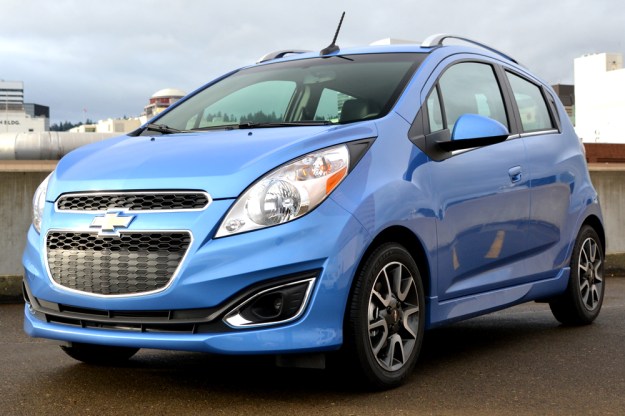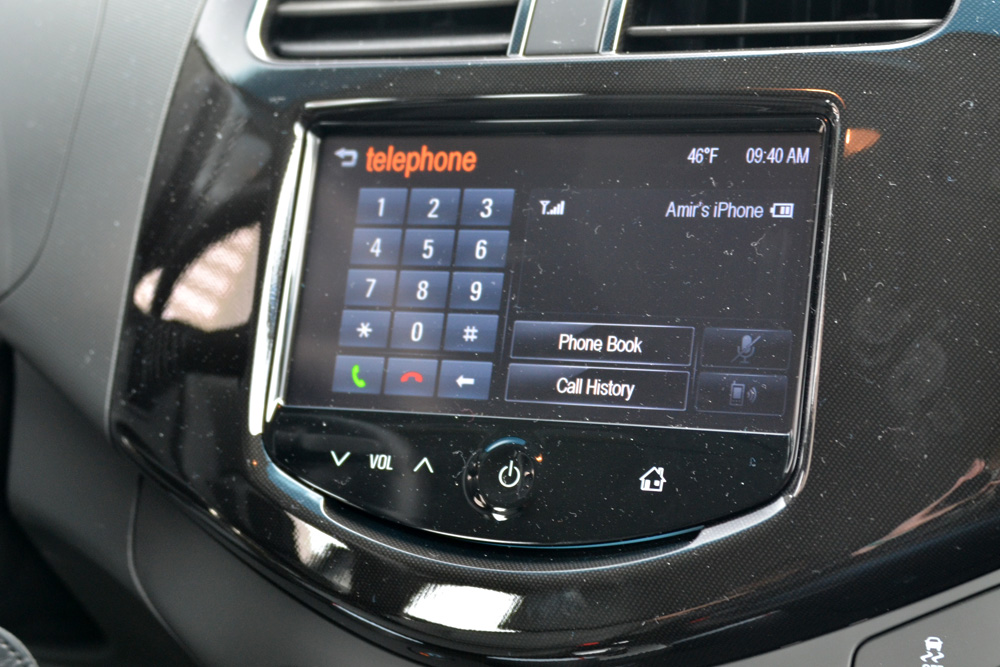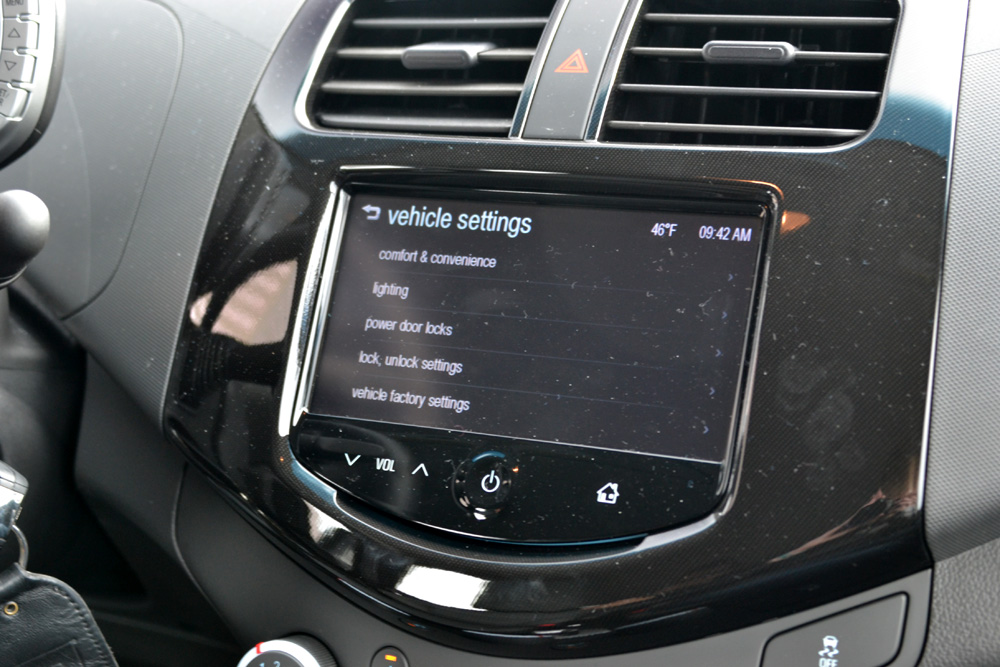
History tells us that innovators rarely receive the warm, glowing reception they deserve. Classical Greek philosopher Socrates drew the collective ire of ancient Athens by criticizing the city’s moral and social decay. Italian astronomer Nicolaus Copernicus’ theory that the Sun was the center of the universe drew fierce scorn from the Catholic Church. More recently, the Kardashian family demolished the traditional notion that success and wealth need hinge upon any discernible degree of talent.
Which brings us to Chevrolet.
While not nearly as venerated as these other martyrs, Chevy 2013 Spark makes mischief with its own unusual play: It forgoes a CD player altogether and relies on smartphone-based navigation. The Spark is the smallest member of Chevy’s fleet, joining a growing class of mini machines like the Fiat 500 and Smart Fortwo.
Both the 1LT and 2LT trims come with Chevy’s MyLink-branded, seven-inch touchscreen. There is a USB port to cable your smartphone; an AUX jack for MP3 players; and available terrestrial/satellite radio. However, Bluetooth audio streaming is the main focus here, and is something Chevy expects most of its customers will be drawn to.
During my time with the Spark 2LT, which starts at $15,970, I found MyLink to be surprisingly spry. Pairing your smartphone requires nothing but a few short dives into the “telephone” menu. Once paired, I could import my contacts and make phone calls using the touchscreen, through voice recognition, or the mounted steering-wheel controls.
Similarly, Bluetooth audio streaming was easy to set up. I was able to launch Spotify — which is my music streaming app of choice — without having to cable my iPhone 4S. Both artist and song title appear on the head unit, but album art is absent.
Ditching the disc
For those who don’t want to leave their phones tucked away, the Spark’s MyLink offers complete app integration with Pandora and Stitcher through the Smartphone Link feature, which allows you to control an app from the car’s screen. I was able to load my favorite Pandora station through the head unit and control my listening experience with the app’s ancient Rome-inspired thumbs up or thumbs down interface. As of now, only these two apps are supported, although I anticipate more are on their way.
As a warning, Smartphone Link is a little buggy. During testing, error messages occasionally popped up on my phone, and while it generally required nothing more than a restart of the app, it did become bothersome after a while. There were also occasions where the connection between my phone and the Spark would drop entirely, forcing me to manually shut down the app and restart it to resume playback. It’s also worth mentioning that unlike streaming wirelessly with an app like Spotify, both Pandora and Sticher require that your phone be cabled via the USB port.
It might not seem like a leap, but Chevy’s decision to omit a CD player signifies two things: The automaker’s target demographic is indeed younger, more tech-savvy drivers, and it sees digital media as mainstream enough to rely on. It might alienate some older folks in the process, but Chevy is also earning some street cred with a generation of drivers who look to their smartphones as the ultimate hub for their multimedia needs, and in some cases, can’t even remember buying CDs.
 And BringGO was its name-o
And BringGO was its name-o
In addition to eliminating the CD player, Chevrolet’s, next big leap into the future centers on its BringGO navigation app ($50). Instead of a built-in system, the Spark’s sources its navigation through the BringGO app on your smartphone and displays it on the vehicle’s touchscreen.
Sadly, BringGO isn’t available on the Google Play Store or iTunes yet — even though the Spark has been available for a few months now — nor were we given a beta version to play around with. Nevertheless, Chevy’s decision to sport such an innovation feature is commendable, especially in a segment where navigation is seldom seen.
Still, we wonder why anyone would pay $50 for a mapping app when there are so many free ones. Sure, Google Maps won’t display on the car’s LCD screen, but it offers turn-by-turn navigation, and a $10 smartphone mount for the windshield fixes the visibility situation. Chevy might think $50 looks like a pittance beside the price of the car, but for a cash-strapped driver looking at a vehicle this cheap, every penny counts. Either way, I’d have been more impressed if Chevrolet simply made the Spark compatible with any of the reliable, familiar, and free options out there.
No looking back
With one tire in the present and one in the future, the Spark is perhaps the most cutting-edge car a modest budget can buy. It’s far from perfect, with a few bugs tarnishing an otherwise shining experience, but it holds its own even after spending time with vehicles well above the Spark’s sticker price. Getting a chance to test out the BringGO app would have surely proven helpful, but even without it, the Spark’s infotainment system punches well above its weight. If you’re on a budget, but still desire a cabin filled with a generous amount of tech, you’d do well to let the Spark light up your world.







